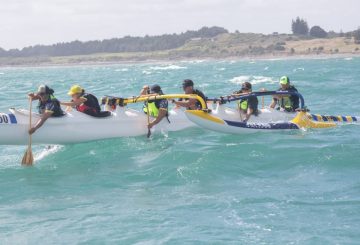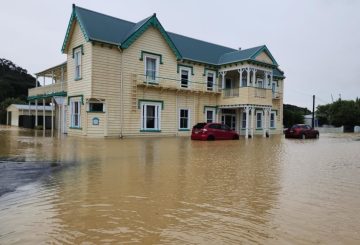Bộ Giáo dục đã bắt đầu một cuộc dọn dẹp khẩn cấp tại Trường Sommerville ở Panmure, sau khi truyền thông đưa tin về điều kiện xây dựng nguy hiểm của trường. Hình ảnh về nấm mốc, nấm và các tòa nhà bị rò rỉ đã gây chú ý vào đầu tháng này.
Hiệu trưởng trường Belinda Johnston cho biết việc dọn dẹp đã bắt đầu hai tuần trước sau khi công chúng phản đối cuộc khủng hoảng tòa nhà của trường. Bà nói rằng Bộ Giáo dục đã cam kết khắc phục những vấn đề cấp bách nhất càng sớm càng tốt. Tuy nhiên, bà cũng lưu ý rằng hành động này chỉ diễn ra sau khi các vấn đề được công khai.
Trường Sommerville làm việc với 15 trường khác trên khắp miền đông Auckland, hỗ trợ học sinh từ lưu vực Ōrākei đến Maraetai. Johnston cho biết trường đang phải vật lộn với tình trạng thiếu không gian và điều kiện xấu đi. Cô nhấn mạnh rằng 40% học sinh, là Pasifika và Māori, bị ảnh hưởng đáng kể bởi những điều kiện này.
Nhà trường đã phải đóng cửa hai lớp học và ngừng nhận học sinh mới do thiếu không gian. Johnston nói rằng việc thiếu bảo trì đã làm trầm trọng thêm các vấn đề hiện có. Cô đề cập đến một trận lũ lụt do hệ thống ống nước cũ đã buộc trường phải đóng cửa hai lớp học, phòng tắm, phòng họp và phòng giặt ủi.
Sam Fowler, người đứng đầu tài sản của Bộ Giáo dục, thừa nhận tài sản của trường đang trong tình trạng tồi tệ. Ông đảm bảo rằng họ sẽ tiếp tục làm việc để cải thiện tình trạng của tòa nhà và tài trợ cho việc bảo trì liên tục đã được đưa ra.
Johnston cho biết việc dọn dẹp ngay lập tức là để giải quyết các vấn đề cấp độ bề mặt và thiệt hại do lũ lụt đang diễn ra. Tuy nhiên, cô nhấn mạnh rằng việc sửa chữa khẩn cấp là không đủ để khắc phục các vấn đề về cấu trúc của trường. Nhà trường đang chờ xác nhận từ Bộ Giáo dục về thời điểm trường học sẽ được xây dựng lại và liệu các kế hoạch mới có phù hợp hay không, xem xét việc cắt giảm tài trợ của chính phủ trung ương.
Fowler, thay mặt cho Bộ, nói rằng một cuộc tái phát triển lớn của trường đang được lên kế hoạch và việc xây dựng dự kiến sẽ bắt đầu vào năm 2025. Ông thừa nhận rằng dự án đã mất quá nhiều thời gian để thực hiện và hoan nghênh cuộc điều tra của chính phủ về chức năng tài sản của trường.
Nghị sĩ địa phương Jenny Salesa cho biết chính phủ trước đây cam kết hỗ trợ xây dựng lại trường học để giúp những người học dễ bị tổn thương. Bà nhấn mạnh rằng tình trạng hiện tại của các tòa nhà của trường không lành mạnh và hư hỏng, đó là lý do tại sao đầu tư xây dựng lại một cơ sở phù hợp với mục đích là cần thiết.




























































